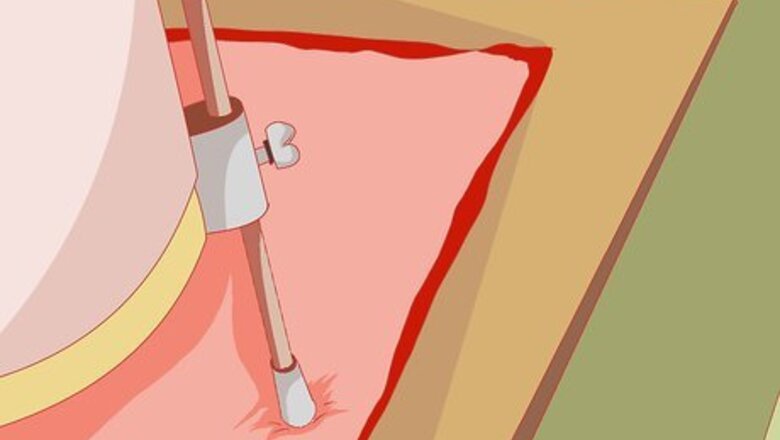
views
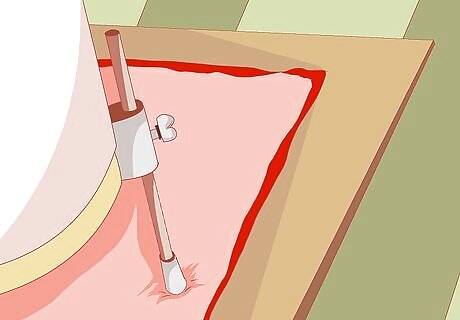
Carpet (if you don't already have one of these, it will make your life much, much easier by preventing your drums from moving, and giving you the ability to mark on the carpet where everything goes), bass drum and kick pedal, throne, snare, mounted toms, floor toms, cymbals. Start by laying down your rug.

Next, extend the legs on your bass drum spurs so that the front hoop is about an inch off the ground, placing the drum with the spurs 4–6 inches (10.2–15.2 cm) from the outer edge of the carpet or drum riser. (If you're on a gig, the sound engineer will, no doubt, be grateful you left room for a microphone!)
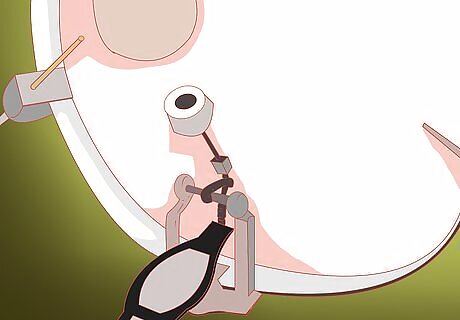
Attach the bass drum pedal - and slave pedal if you play double kick. Take into consideration how tall you are. If you're on the shorter side, you might find that your throne is as low as it will go - hopefully that's low enough. On the other hand, if you're over 6 feet (1.8 m), you probably don't want to have your throne all the way down. It should be set high enough that when seated, your hips are 1 to 2 inches (2.5 to 5.1 cm) above your knees. Make sure that you are close enough to the foot pedals so that your knee rests almost directly over your ankle. This will provide you with the most power and control.
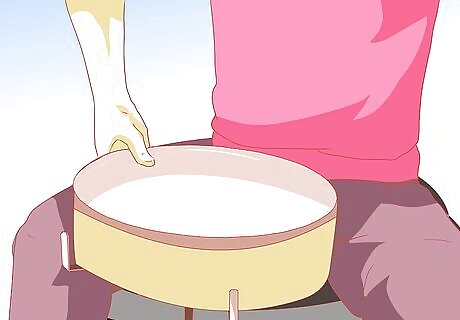
Your snare should be set relatively flat, placed right between your legs, and high enough that your hands don't bang into your thighs when you rim shot (don't re-read that sentence too many times).
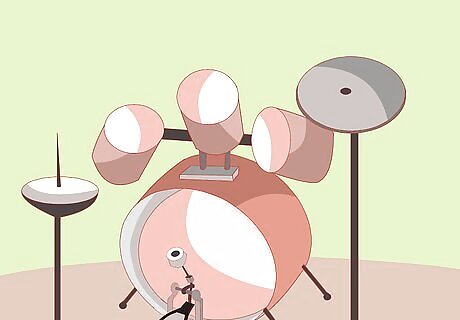
Your mounted toms (any number is acceptable, but typically you'll have 1,2, or 3 mounted toms.) should be suspended over the bass drum between the hi-hat and ride cymbal. Your maneuverability with these is dependent on the depth of the toms, height of the bass drum, and type of mounts you have. If there is a center post mounting them to the bass drum, your range of motion will be relatively limited. If they are suspended from the cymbal stands you'll have a little bit more mobility, as well as slightly increased sustain with fewer sympathetic vibrations. As a rule of thumb, the angle of your toms should never pass 45 degrees. The only exception to this is if your bass drum is too tall, and/or your toms are too deep to get closer positioning. Personally, I like my mounted toms low and mostly flat, with the rims as close together as possible without touching. This trend in drumming has led to many manufacturers providing much shallower toms than in years passed. The idea behind this is to ensure that your sticks will be able to rebound when they strike the playing surface, and you can move quickly between them. If your toms are tilted too far towards you and you strike the head at greater than 30 to 45 degree angle, the natural rebound off the head is greatly diminished.

Your floor tom should be next to your bass drum leg, opposite your snare with approximately the same height and angle as the snare. If your floor tom has legs, you can usually gauge the placement by placing the leg furthest from me just to the right of the bass drum, in between the bass drum and ride cymbal stand.
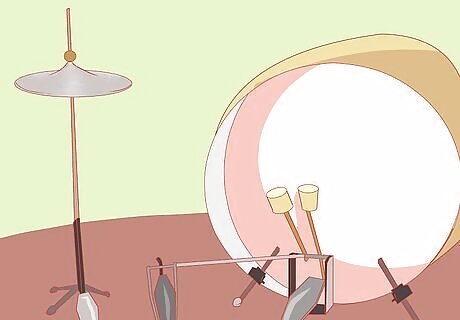
If you play a double pedal, place your hi-hat stand right next to the slave pedal, and you should find that it's already in a comfortable place for you. If it seems too far away, simply bring both pedals in towards you. Make sure your hi hat cymbals are high enough to allow your right hand to strike the snare, yet low enough that you can easily play with the tips of the sticks on the top of the cymbals.
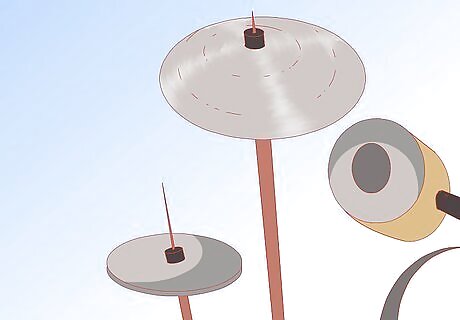
Your crash cymbal is usually placed in between the 1st mounted tom and the hi-hat. Again, high enough to "crash" the cymbal with the shoulder of the stick, and low enough that you can play with the tip of the stick on top of the cymbal.

The ride cymbal is generally placed over the floor tom. The topic of ride cymbal placement is the subject of much debate as some players like it really low and almost parallel to the ground, or higher up and tilted with the bell toward the player, and everywhere in between.
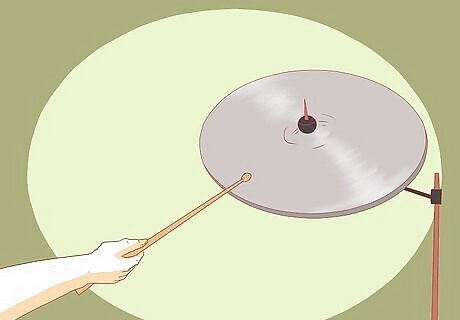
Just keep in mind the idea of "ergonomics when placing the ride. Put it somewhere that will be comfortable for you to play on a consistent basis, where you can easily reach the bell, ride on the bow of the cymbal and even crash when necessary.


















Comments
0 comment